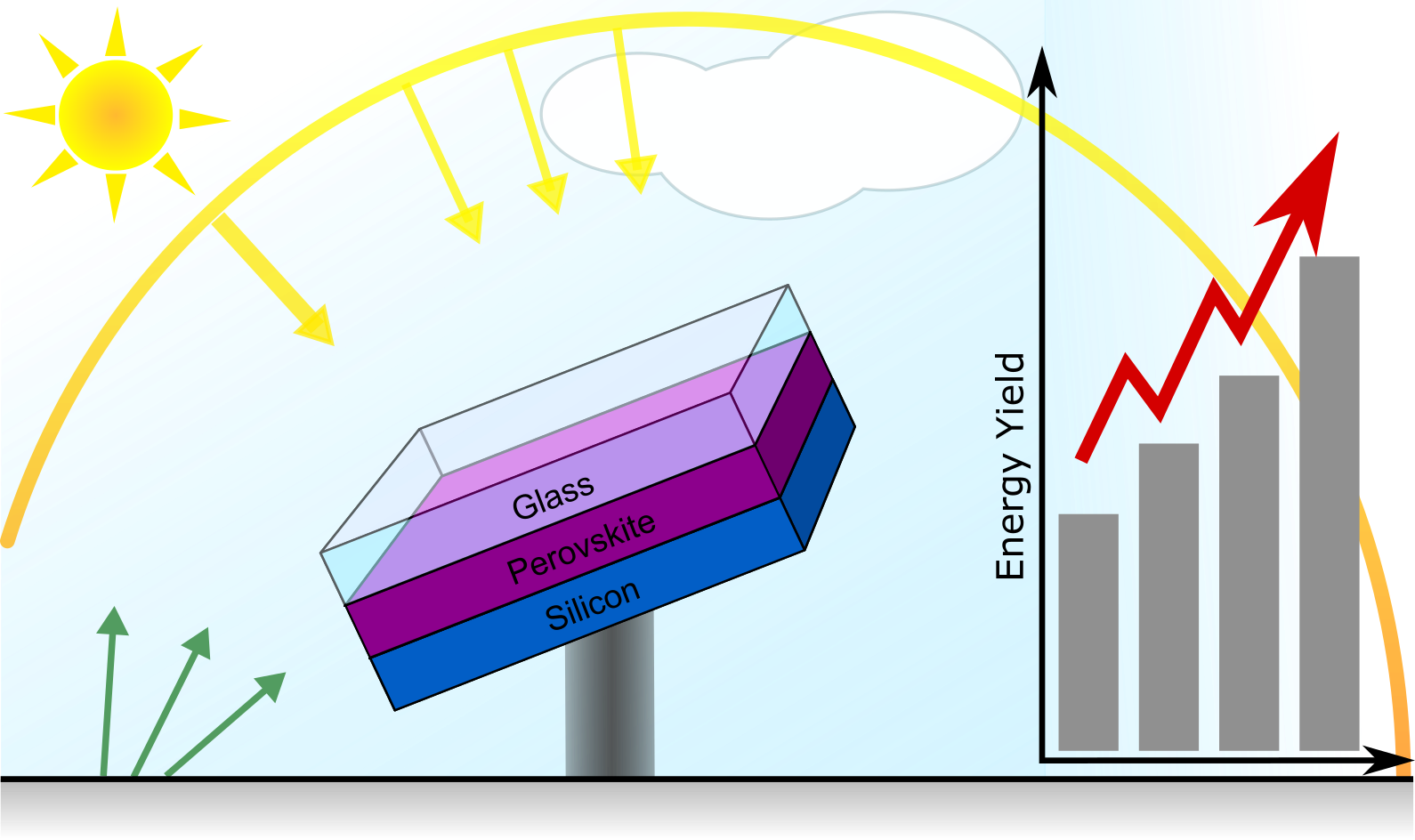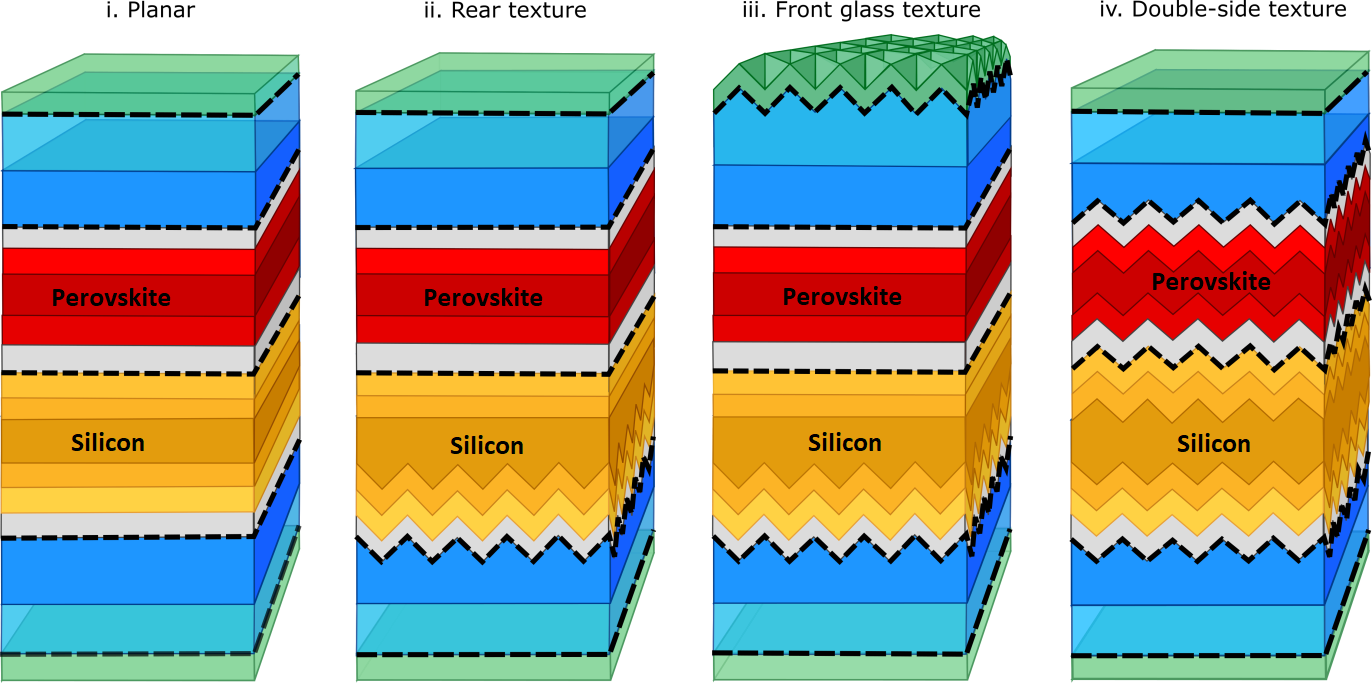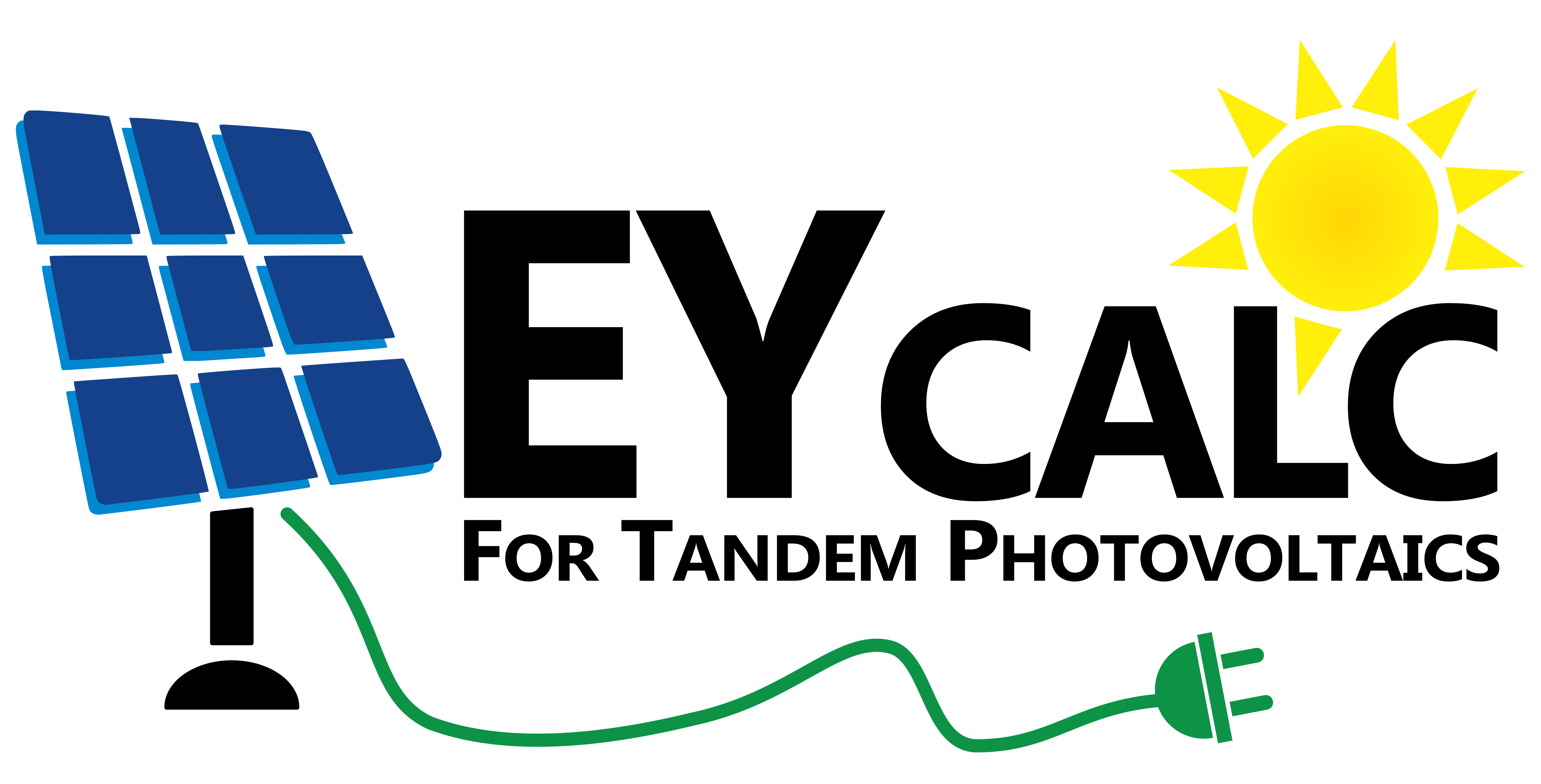Energy Yield Modelling
Given the complex architecture of perovskite-based tandem solar cells, optical modelling and energy yield calculations are indispensable tools to optimize the device architectures and, thereby, minimize financial and energy payback times. We developed an in-house software package that allows rapid simulation of the complex tandem architectures and detailed calculation of their power output under realistic irradiation conditions for locations in various climatic zones. The software is able to answer important research questions of novel tandem solar cells in terms of texture, architecture, bifaciality, electrical interconnections, and much more. [1]

Figure: Schematic illustration of the energy yield (EY) calculation.
Understanding the impact of pyramid textures in perovskite/silicon tandem photovoltaics
In order to maximize the energy yield and further reduce the levelized cost of electricity, efficient light management concepts are of key importance. In a recent numerical study, we provide a systematic energy yield analysis for two-terminal (2T) perovskite/silicon (Si) modules employing micron-scale random pyramids at the front and/or rear surface of the tandem modules. [2]

Location‐specific optimization of perovskite/CIGS tandem solar modules
The complexity of perovskite/CIGS tandem solar module architectures requires careful optimization of the layer stack under realistic solar irradiation conditions. In a study, we analysed the impact of varying spectral irradiation and the average photon energy between different locations of different climatic zones on the energy yield of two-terminal and four-terminal perovskite/CIGS solar modules. [3]
Energy Yield Advantages of Three-Terminal Perovskite-Silicon Tandem Photovoltaics
Besides, two- and four-terminal electrical interconnection, we recently investigated the advantages of the three-terminal perovskite/silicon tandem architecture. The three-terminal architecture bears great promise as it combines the advantages of two- and four-terminal architectures. In this regard, it demonstrates a larger photogenerated current density in the absorber layers compared with four-terminal architecture and a higher robustness to spectral variations compared with two-terminal architecture. [4]

Figure: Schematic cross-section of 2T, 4T and 3T architectures. Purple arrows indicate the electron flux at the maximum power point, in the two cases of current injection (JPe > JSi) or current extraction (JPe < JSi) from the Z terminal.
Software “EYcalc” open to the public
Our energy yield software “EYcalc” if freely available at https://github.com/PerovskitePV/EYcalc. It aims to simulate the energy yield of single-junction and multi-junction solar cells. In contrast to the power conversion efficiency (PCE), the energy yield (EY) accounts for environmental conditions, such as constantly changing irradiation conditions or the ambient temperature. It allows rapid simulation of complex architectures and was developed with the aim to handle textured perovskite-based multi-junction devices. However, it is not limited to that, and it is possible to simulate any combination of thin-film architecture with incoherent photovoltaic materials (e.g., crystalline silicon).
Related publications of our team
- F. Gota et al., Energy Yield Modeling of textured perovskite/silicon tandem photovoltaics with thick perovskite top cells. Optics Express. (2022). doi:10.1364/OE.447069 .
- F. Gota et al., Energy Yield Modeling of Bifacial All-Perovskite Two-Terminal Tandem Photovoltaics, Advanced Optical Materials. (2022). doi:10.1002/adom.202201691.
- M. De Bastiani et al., Efficient bifacial monolithic perovskite/silicon tandem solar cells via bandgap engineering, Nature Energy. (2021). doi.org/10.1038/s41560-020-00756-8.
- J. Lehr et al., Numerical study on the angular light trapping of the energy yield of organic solar cells with an optical cavity, Opt. Express. (2020). doi.org/10.1364/OE.404969.
- F. Gota et al., Energy Yield Advantages of Three-Terminal Perovskite-Silicon Tandem Photovoltaics, Joule, (2020). doi.org/10.1016/j.joule.2020.08.021.
- J. Lehr et al., Energy yield of bifacial textured perovskite/silicon tandem photovoltaic modules, Sol. Energy Mater. Sol. Cells. (2020). doi:10.1016/j.solmat.2019.110367.
- R. Schmager et al., Methodology of energy yield modelling of perovskite-based multi-junction photovoltaics, Opt. Express. (2019). doi:10.1364/oe.27.00a507.
- M. Langenhorst et al., Energy yield of all thin-film perovskite/CIGS tandem solar modules, Prog. Photovoltaics Res. Appl. (2019). doi:10.1002/pip.3091.
- J. Lehr et al., Energy yield modelling of perovskite/silicon two-terminal tandem PV modules with flat and textured interfaces, Sustain. Energy Fuels. (2018). doi:10.1039/c8se00465j.


